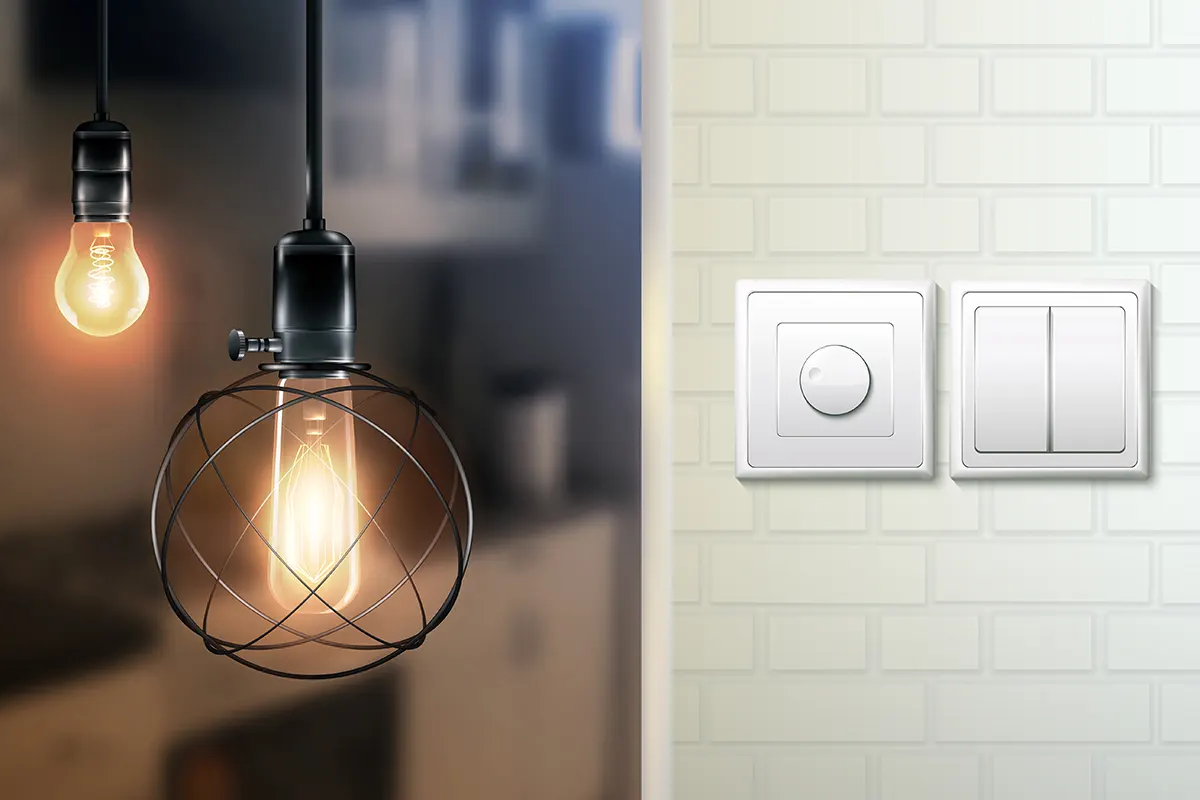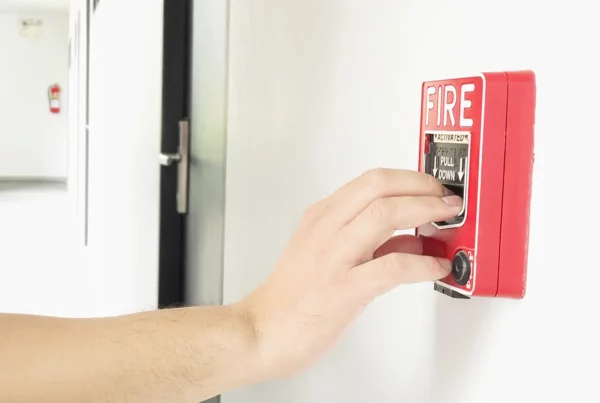
Dimmer switches are electrical devices used to change the brightness of a light or appliance. They are typically used in lighting applications, though most modern dimmers switches operate on alternating current (AC) rather than direct current (DC).
How Do Dimmer Switches Work?
They use an analog control circuit inside the device that’s either directly connected to the device it controls or connected indirectly via a power transformer to the device it controls. The control circuit has two terminals and sends power from one terminal to another through either capacitance or inductance, depending on whether AC or DC is controlled. If the control circuit is capacitive, the power is sent through a capacitor and into the device; if it is inductive, it goes through an inductor. When the switch wants to dim or brighten a device, it changes its output voltage so that the device has a change in current, which results in an equivalent change in voltage. This change in voltage is called a step-up or step-down and can be controlled by adjusting the control voltage.
Types of Dimmer Switches
1) In push-on-push-off type switches, the switch is operated by putting one end in an electrically conductive position to operate the switch and allowing the other end to be pulled away from this conductive position to turn off the switch.
2) In toggle-type switches, the switch is operated by pushing the switch forward and back to turn off.
3) In slide switches, the switch is operated by moving it up and down.
4) In rotary-type switches, the switch is operated by turning a knob.
Advantages of Dimmer Switches
1) Provides an easy way to control devices from a distance without having direct contact with them.
2) Allow for more accurate dimming of lights because it can be regulated on a minute scale.
3) They are relatively easy to install and use.
4) They provide safety for the user because they eliminate the need for electrical contact between the user and the controlled device.
How dimmer switches compare to traditional switches
1) Dimmer switches are a bit more expensive than traditional switches due to their specialized nature and the technology incorporated into them.
2) They also use more energy than traditional switches.
3) The position of dimmer switches is not as easily adjustable as the position of traditional on/off switches.
4) Traditional light switch technology is less efficient than dimmer switch technology, requiring much more electricity per unit to produce the same amount of light as a dimmer switch.
5) Traditional light switch technology produces light that appears at full brightness instantly, while dimmer switch technology provides light that takes time to reach its maximum brightness level.
How to Install a dimmer switch
1) Locate the power input and the load terminals on the switch.
2) Verify that you have the correct type of switch for your application. Most common switches are designed for standard incandescent loads (light bulbs) and fluorescent/LED (light emitting diode/light-emitting diode) loads.
3) Check that you have enough power to operate the device. In many older lighting installations, a single three-way wire is used to carry power from one room to another. This installation cannot support a dimmer, as it would overload this wire beyond its capacity. In the event this happens, install a switch in the circuit that already exists.
4) Install the switch according to its instructions. Screws or mounting clips may mount the switch, or it might need internal supports to operate correctly.
5) Test the switch after it is installed. Take note of any errors that occur and deal with them accordingly, as they will prevent the continuing function of your lighting system.
Where to buy Dimmer Switches
A common place to find these switches is in retail outlets that sell home improvement supplies, such as your local hardware store. Another option is to check online, as many different switch manufacturers sell directly to customers.
How to find the right dimmer switch
There are a lot of factors to consider when choosing a switch for your needs. You must check out the technical specifications of what you want to dim and how you want it to be controlled. The main points to consider when searching for the best switch are the switch type, control method, and features such as memory and protection.
What is the duty cycle on a dimmer switch
The duty cycle is when your installed switch will continue operating at a certain brightness level. This could be watts out or amps out, depending on what you are using it for. The brighter the lights will be and the less light you can use, but you may want to turn off all lighting when not in use.
FAQs
Here are the frequently asked questions about dimmer switches
What is a PWM dimmer switch?
Pulse width modulation is a form of control that these switches use to change the amount of power going into the light bulb. This allows for more precise control over how much power goes to the light bulb and when it works. Since dimming is done by switching between an on and off state, it can be easy to make mistakes and end up with too bright or too dark lighting.
How do I select the right dimmer switch?
There are several ways to choose a switch, but most people will try a few different switches before settling on just one. You can also look at other people’s opinions on what they liked in a switch and what didn’t work for them, but the best way to choose your switch is to test it out for yourself and make sure that you understand how the controls work.
What color of dimmer does my light need?
The color will tell you what type of load your dimmer needs to be able to handle. For example, if you have an incandescent light, you have a Tungsten filament that heats up as current goes through it. Fluorescent or LED lights do not get as hot as incandescent lights and are ideal for use with dimmers.
What is the best dimmer switch for my application?
The best switch depends on your needs and what you already have. There is no one switch that will fit all situations as each type of switch has different specifications. If you have an LED or fluorescent light, look for a switch to handle these loads. If you have an incandescent light, look for one that can handle Tungsten filament lights.
What is the difference between a dimmer and a variable transformer, or a variac?
Dimmers, variable transformers, and variacs control the amount of power going to your lights, but there are some critical differences between them. The main difference is that dimmers are often used in systems already installed, and variable transformers and variac allow for remote control of the power going to your lights.
Can I install it myself, or do I need to hire an electrician for this job?
Installing the switch is not usually hard to do yourself if you have an electrical background. You need to be cautious and ensure that you clearly understand what you’re doing, but these switches are relatively easy to work with. If you have any trouble installing the switch, or if it’s just not something you’re comfortable doing, it’s always a good idea to hire an electrician.
Can I install a dimmer switch if I don’t have direct access to the light?
Dimmers can be installed from either side of the wall if you have a clear line of sight. For example, if your light has a heavy glass fixture, this might limit where you can put it in your switch.
What is a single phase dimmer switch?
A single-phase dimmer switch is designed for single-phase systems. They use a neutral wire operation but can be installed on two-wire configurations if there is insufficient demand. These switches are often used in older homes that have been retrofitted with more modern lighting systems, but they can also be used for new installations.
In conclusion, dimmer switches are a great addition to any home. They provide the lighting you want while adding convenience and saving on energy costs. It’s essential to do your research first, as there are so many dimmer switches out there that it can be hard to pick one in particular. Please consider where you will install the dimmer switch, what load you’ll have plugged into it, and what features you want to include with the switch.
Electric switch vector created by macrovector_official – www.freepik.com









